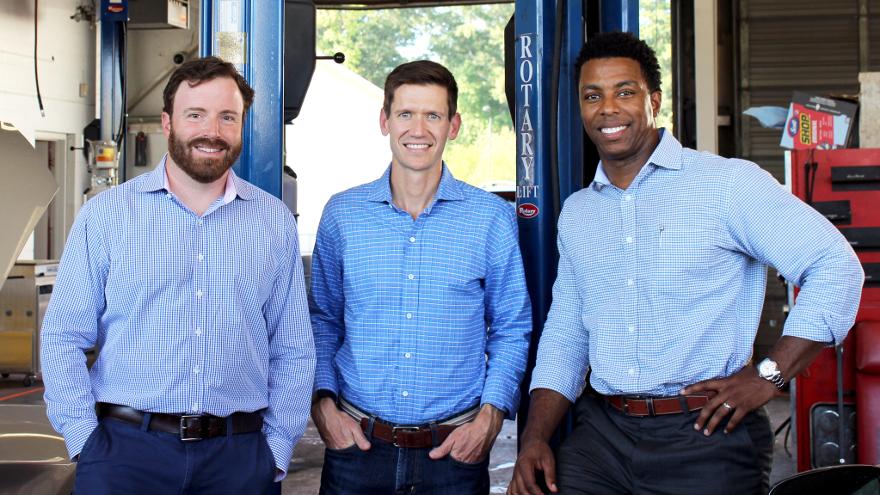COMMENTARY: Why & how to think of remarketing as consumer product

Michael Bor (left) is the chief executive officer of CarLotz.
The auto remarketing industry is at an interesting point in its history.
The number of off-lease vehicles continues to rise, and wholesale prices are dropping in tandem.
As more and more cars roll through, auto remarketers could easily get caught in a higher volume, lower margin cycle.
Within this evolving environment, a fresh strategy can help drive greater profits: taking a cue from upscale consumer product retailers.
Consider a retailer like Ralph Lauren. You can walk into the flagship store on Madison Avenue and purchase a shirt for full retail price. But, not everyone wants to shop in person — and some consumers would rather buy last season’s shirt at a steep discount.
To capture a wider audience, Ralph Lauren broadens its distribution channels and sells clothing to:
- Upscale retailers
- Discount retailers
- International markets
- Wholesalers
Diversifying distribution channels also allows them to efficiently respond to inventory issues. One year, they might manufacture a lot of long-sleeve polo shirts, but consumers end up preferring short-sleeve designs.
Rather than holding onto inventory for too long — or losing their investment — Ralph Lauren can use all available methods to sell their goods. While product prices and margins will be slimmer at each step down the distribution channel, the chance to increase sales quantity and speed can boost revenue.
Would Ralph Lauren prefer to sell every shirt for top dollar? Undoubtedly. But, they work within their industry’s realities and want to maximize their total value. By considering every opportunity in their available distribution channels, Ralph Lauren more effectively moves their products, broadens their target audiences and moves inventory.
For progressive auto remarketers, applying this classic consumer product mindset can dramatically improve margins. In fact, remarketers ARE selling a consumer product; they just may not think about it that way.
The vehicle that they sell at auction has all the characteristics of a typical consumer product: It has a style or fashion component that may fade over time, it sells better or worse depending on the season or brand or feature set, and it can fall into or out of favor depending on its scarcity. To reap the greatest benefits, you may have to adjust your choices.
3 ways to apply consumer product strategies to auto remarketing
1. Consider all distribution channels
The wholesale market is just one of several channels progressive remarketers should use — especially as an influx of off-lease vehicles flood the market. Online and retail remarketers provide ways to reach new customers who wouldn’t buy a vehicle at auction.
Broadening your geographic focus can also benefit your bottom line. For example, imagine you have too many two-wheel drive trucks in New England, and you know the weather makes them a bad fit for local customers.
Use your distribution channels in warmer locales to find buyers who don’t need 4-wheel drive and will pay a higher price for the trucks. Or, if you get a ton of the same car coming off lease at the same time, spread the vehicles out across the country. By doing so, you can avoid diluting the market — and cutting your margins — in one channel.
2. Segment your products
You won’t find current-season, perfect-condition Ralph Lauren apparel at TJ Maxx. But, you might discover an older style for a fraction of its original price, because the designer brand knows when and where to sell its products.
For auto remarketing, the same thinking would lead you to analyze which car should go straight to auction — and which is worth the time and expense of reconditioning for retail. Vehicles in good condition, for instance, fetch higher prices when sold through retail remarketers than they would through wholesale remarketing channels. Determining which cars may sell at retail can significantly increase margins, compared to selling the same vehicle at auction.
3. Be nimble
Thorough planning and a disciplined process matter — and the ability to recognize opportunities as they arise is just as critical for lasting success. Consumer-products companies must create a plan for distributing their goods and then quickly adapt to changing market conditions.
Auto remarketers would do well to mimic this behavior. Whether its consumers’ waning interest in sedans or a higher volume of quality cars hitting the auction block, our industry is in constant flux. By reassessing distribution-channel strategies, progressive remarketers can find new ways to build the bottom line and adapt to market changes.
On the surface, clothing and cars may not have a lot in common. But each industry deals with consumers’ constantly changing tastes and an expanding number of sales channels. The consumer-product mindset that’s so prevalent in fashion has a lot to offer auto remarketers, as well. With some upfront work and a refocused perspective, progressive remarketers can diversify the channels they rely on — and improve their sales one car at a time.
Michael Bor is co-founder and chief executive officer of CarLotz.

 View The Latest Edition
View The Latest Edition

